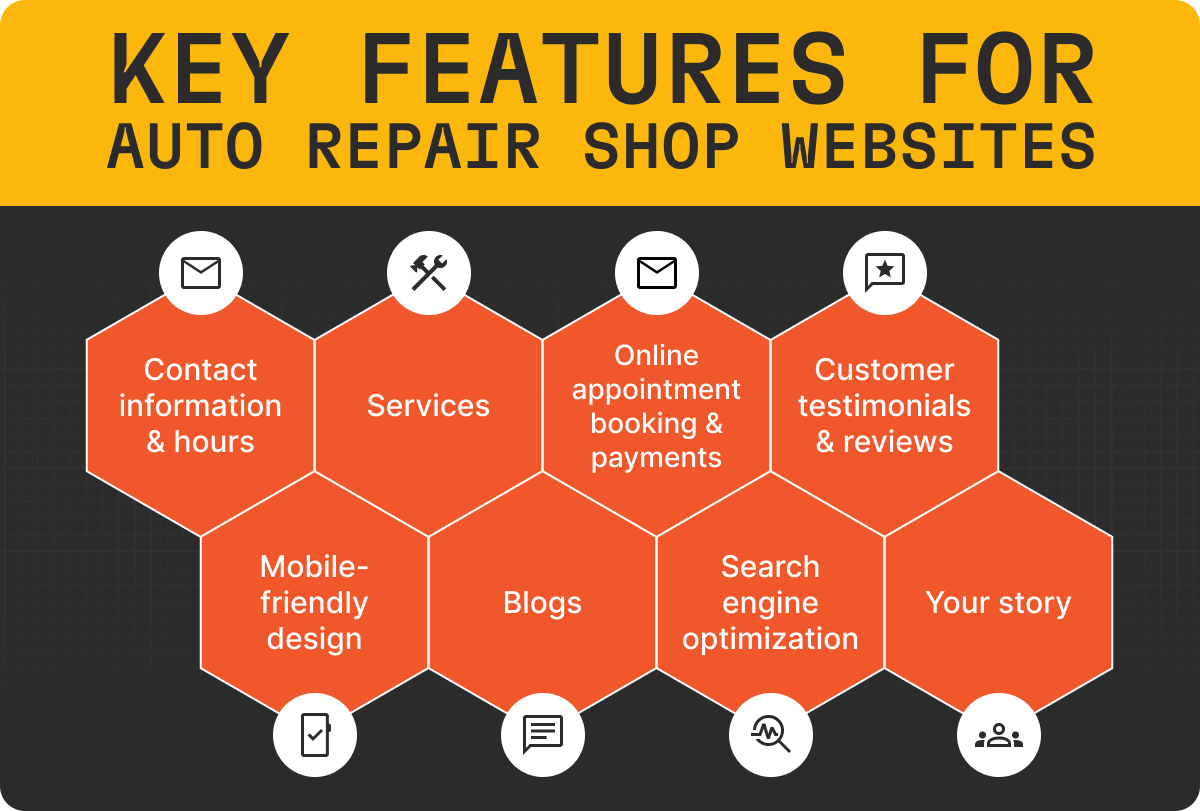Automotive repair manuals are packed with detailed instructions. Instead of grappling with trial and error, technicians can follow step-by-step guides. This boosts confidence and reduces repair times. These manuals aren't just about fixing problems. They provide insights into preventive maintenance, helping technicians keep vehicles in tip-top shape. More uptime for a vehicle means happier clients and fewer surprise breakdowns.
Key Benefits of Auto Repair Manuals
- Detailed Instructions: Clear, step-by-step procedures make repairs efficient and straightforward.
- Accurate Information: Ensures that the latest techniques and specifications are being used.
- Preventive Maintenance Tips: Helps keep vehicles in better shape for longer.
- Enhanced Learning For New Techs: Fast-tracks new mechanics by providing valuable knowledge.
Good manuals go beyond just the basics. They often include diagrams, diagnostic trouble codes, and even tips from experienced technicians. This can be a game-changer, especially for those rare, hard-to-solve problems.
Quality manuals foster consistency. Regardless of which technician picks up the job, the repair approach remains standardized. This is essential for shops that aim to maintain a reputation for reliability.
In summary, investing time in finding and using quality car repair manuals is a no-brainer for any technician aiming for efficiency, accuracy, and safety in their work.
The Best Car Repair Manuals
1. Factory Service Manuals (FSM): The Gold Standard
When it comes to automotive repair, Factory Service Manuals (FSM) are considered the best in the market. These manuals come directly from the car manufacturer, providing the most accurate and detailed information available. FSMs are the backbone of any serious technician's toolkit. Their reliability and depth make them indispensable, ensuring that every nut and bolt is turned precisely according to manufacturer guidelines.
Pros
- Accuracy: FSMs offer the exact specs and procedures recommended by the manufacturer. It's as close as you can get to OEM (Original Equipment Manufacturer) specifications.
- Detail: These manuals feature in-depth diagrams, step-by-step procedures, and comprehensive troubleshooting instructions. They cover everything from basic maintenance to complex repairs.
- Comprehensive Coverage: FSMs cover all models and variations of a particular vehicle. Whether you're dealing with a base model or a fully loaded version, the FSM has you covered.
- Updates and Revisions: Manufacturers often update FSMs to include fixes for common issues, recall information, and software updates. You get the latest and greatest info.
- Online Options: Manufacturer websites, auto forums, and E-commerce platforms often offer these manuals in digital format.
Cons
- Cost: Depending on the manufacturer, these manuals can be more expensive than other options.
- Learning Curve: Factory Service Manuals are written to professionals and do not offer as much explanation as other manuals.
- Access: Online versions might require proprietary software or access through specific portals.
2. Chilton Repair Manuals: Accessible and Beginner-Friendly
Chilton auto repair manuals have earned a reputation for being highly accessible and easy-to-use, making them a favorite among DIY enthusiasts. These manuals provide detailed information that is crucial for diagnosing and repairing a wide range of vehicles. They also provide maintenance schedules to keep your cars on the road longer.
Pros
- User-Friendly: Unlike Factory Service Manuals, Chilton uses clear and easy-to-understand language making even complex repairs easier to understand and execute.
- Detailed Diagrams and Illustrations: Visual aids enhance comprehension, providing clarity on intricate parts and procedures.
- Troubleshooting Sections: Identify problems quickly with systematic guidance to diagnose and fix common issues.
- Layout: Chilton manuals are organized in a way that makes finding information quick and painless. Indexes and tabulated sections ensure that users can quickly navigate through the content without unnecessary hassle.
- Online Options: Chilton auto repair manuals can now be accessed online, providing additional convenience for tech-savvy technicians and DIYers. Benefits include instant access, search functionality and regular updates.
- Cost: Some libraries and websites feature these manuals for free making them a more budget-friendly option for DIY enthusiasts and small auto shops.
Cons
- Generic Content: While comprehensive, Chilton manuals may not be as detailed as Factory Service Manuals, especially for complex repairs. Chilton tries to cover a range of models, which can sometimes lead to less specific guidance.
- Visuals: Chilton can be stingy on visuals and may not be best for those technicians who prefer diagrams and graphics.
- Complex Repairs: May lack the depth needed for very advanced or intricate repairs that professional mechanics might require.
- New Models: May not always cover the very latest models immediately after they are released.
3. Haynes Repair Manuals: DIY Friendly Guides
Haynes auto repair manuals have been a go-to for DIY enthusiasts because they use easy-to-understand language and more visuals than other options. These guides excel in breaking down complex automotive tasks into simple, easy-to-follow steps. Each manual is backed by hands-on reviews, ensuring the steps and procedures actually work. This reliability adds a layer of trust, making these guides a dependable companion for any repair task.
Pros
- Visuals: Haynes repair manuals offer more photos and illustrations than Chilton.
- Comprehensive Coverage: Haynes auto repair manuals cover everything from maintenance and troubleshooting to engine and transmission repair. However, they do not offer as much depth as Factory Service Manuals.
- Tips and Tricks: Cost and time saving tips from experts are included in Haynes manuals to speed up any repair project.
- User-Friendly: Written in plain English with large text, headings and lie-flat design make this manual easy to read even with greasy hands.
- Digital Options: Online versions are available and feature search functionality, zoomable images and bookmarks. Haynes is typically cheaper than Factory Service Manuals.
Cons
- Shallow Content: While Haynes offers comprehensive coverage, more experienced mechanics prefer Factory Service Manuals for more specific guidance.
- Coverage for New Models: May not immediately cover the latest vehicle models or recent changes in technology.
- Specialized Repairs: Might not cover specialized or unique repairs that are specific to certain models or configurations.
4. AllDATAdiy: Online Subscription for Advanced Users
ALLDATAdiy repair manuals offer original factory repair information that professionals use, including maintenance schedules, diagrams, and repair procedures. However, they only offer an online subscription-based model with no print options. These manuals are typically preferred by professional technicians and have a larger learning curve for DIY enthusiasts.
Pros
- Factory-direct: Information is straight from the factory and has not been edited.
- Updates: Regular updates cover newer car models and reflect the latest information.
- Accessibility: Online format enables you to take this with you wherever you need it (as long as you have a stable internet connection).
- Comprehensive: Offers in-depth diagnostic and troubleshooting guides to help identify and fix issues accurately. ALLDATAdiy provides more advanced information than Haynes or Chilton.
Cons
- Cost: ALLDATAdiy can be more expensive than other auto repair manual options because of the subscription-based pricing model.
- Learning Curve: The information can be technical and may assume a certain level of expertise, which can be challenging for novice DIYers.
- Interface: The digital platform might have a learning curve, particularly for those who are more accustomed to using printed manuals.
5. E-Manuals Online: Convenience in the Digital Age
Navigating car repairs has never been simpler, thanks to the rise of e-manuals. No more flipping through bulky paperback manuals—technicians now have repair information at their fingertips, right on their devices. The world of auto repair is rapidly evolving, and e-manuals are leading the charge toward a more efficient, convenient, and eco-friendly future.
Pros
- Accessibility: Technicians can access manuals 24/7, whether in the shop or on-site at a customer's location. These manuals can be accessed digitally, printed or downloaded for offline use.
- Search Functionality: Quickly locate specific information using keyword searches, saving precious time.
- Environmentally Friendly: Reduces the need for printed materials, contributing to environmental sustainability.
- Cost: Generally less expensive than printed manuals or subscription-based services like ALLDATAdiy.
Cons
- Digital Proficiency: Users need a basic level of digital proficiency to navigate and use the manuals effectively.
- Updates: Unlike subscription services, E-Manuals may not receive regular updates, potentially leading to outdated information, especially for newer vehicle models.
- Technical Depth: E-Manuals may assume a certain level of mechanical knowledge, which can be challenging for beginners. They may lack the depth required for very advanced or specialized repairs compared to Factory Service Manuals.
6. MOTOR Auto Repair Manuals: Professional Grade Manuals
MOTOR vehicle service manuals are widely used by professional mechanics and automotive technicians. They provide extensive coverage, detailed diagnostics, and professional tools that are essential for efficient and reliable vehicle repairs. However, their cost, complexity, and professional focus may make them less suitable for casual DIY users.
Pros
- Extensive Coverage: Provides detailed repair procedures, diagnostic information, and maintenance schedules for a wide range of vehicle makes and models.
- Up-to-Date Information: Regularly updated to include the latest service bulletins, recalls, and technical updates from manufacturers.
- Print and Digital: Available in both print and digital formats, catering to different preferences and needs.
- Labor Time Guides: Includes labor time estimates for various repairs, which are useful for both professionals and customers to estimate repair costs.
Cons
- Cost: Generally more expensive than consumer-oriented manuals like Haynes or Chilton with online options having recurring subscription fees.
- Technical Language: Written for professionals, so the language and terminology may be difficult for novice or DIYers to understand.
- Professional Orientation: Primarily targeted at professional mechanics, which means it may not always consider the needs of DIY enthusiasts.
7. Car Repair Forums and Online Communities
Auto repair forums and communities offer a treasure trove of knowledge that complements online auto repair manuals. Technicians can gain real-world insights, share experiences, and solve unique issues by participating in these interactive platforms. Top platforms include Reddit, YouTube, FaceBook, Instagram and more.
Pros
- Build Relationships: Forums and communities provide opportunities to converse with fellow mechanics and learn from peers.
- Relevant Information: Chances are that if you have had a question that someone else has asked it before you did. Provides up-to-date information.
- First Hand Information: Learn from those in the field with first hand knowledge.
- Cost: Most car repair forums are free to join and use, making them an affordable resource for information and troubleshooting.
Cons
- Inconsistency: Each forum has different rules for members and it can take awhile to find the information you are looking for.
- Quality of Information: Information can vary in accuracy, as advice is given by users with different levels of expertise and experience.
- Standards: Solutions may vary in quality and reliability, and some suggestions may not follow professional or manufacturer guidelines.
How to Choose The Best Auto Repair Manual
Selecting the best auto repair manual can make a huge difference in terms of efficiency and ease of fixing vehicles. Technicians should consider a few key factors before settling on a manual:
- Coverage: Make sure the manual covers the specific make and model of the vehicle being serviced. Some manuals offer broader coverage, while others are more specialized.
- Detail: Look for manuals that provide step-by-step instructions, diagrams, and photos to make the repair process as clear as possible.
- User Reviews: Check out what other techs are saying. Real-world feedback can offer insights into the manual's reliability and usefulness.
- Updates: The automotive world changes constantly. Manuals that receive regular updates will always have the latest information and procedures.
- Cost: Consider the price but also weigh it against what you’re getting. Sometimes paying a bit more means getting a lot more in value, other times it is best to opt for a free version from a library or website.
- Accessibility: Evaluate how you will access the manual. Can it be easily viewed on a smartphone or tablet while you’re in the shop? Is there a downloadable option for offline use?
Always remember, the best manual is the one that fits your specific needs and workflow. Each repair shop is different, and what works for one might not work for another. Be strategic and thoughtful to ensure you’re choosing a resource that will serve you well in the long run.


.png)

.png)
.png)



.svg)



.svg)